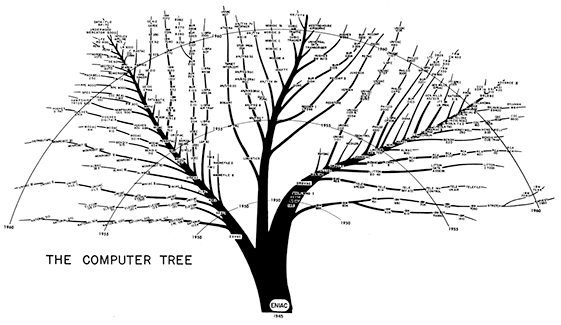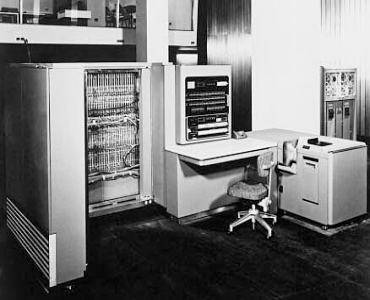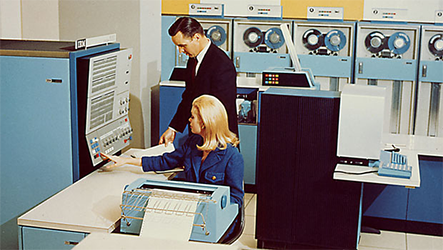BACK


Shattering Technological Barriers

Short-Term Impact
The ENIAC Six shattered technological barriers by demonstrating that a computer could be programmed such that the set of instructions performed by the computer could be changed. The computers that preceded it were either non-programmable or only theoretically programmable. Breaking this barrier inspired the modern computer revolution. In the 1950s and 1960s, the development of programmable computers rapidly progressed and led to the birth of the first generation of modern computers.
Excerpt of "Then and Now" documentary describing the evolution of computers 20 years following the ENIAC, 1967, Hagley Museum and Library.

The computer tree showing the evolution of modern computers after the ENIAC, U.S. Army Research Laboratory.

IBM 701 electronic analytical control unit, 1953, IBM.

Woman and man operating the IBM System/360, which was introduced in 1964, IBM.

Long-Term Impact
Some historians believe that the ENIAC Six's pioneering work helped pave the way for stored-program computing, which involves storing programs in a computer's memory. This is important because stored-program architecture continues to serve as the fundamental architecture used on most modern computers today. For this reason, the legacy of the ENIAC Six continues to influence the evolution of modern computers.


Five generations of computers starting with the ENIAC, KmacIMS.